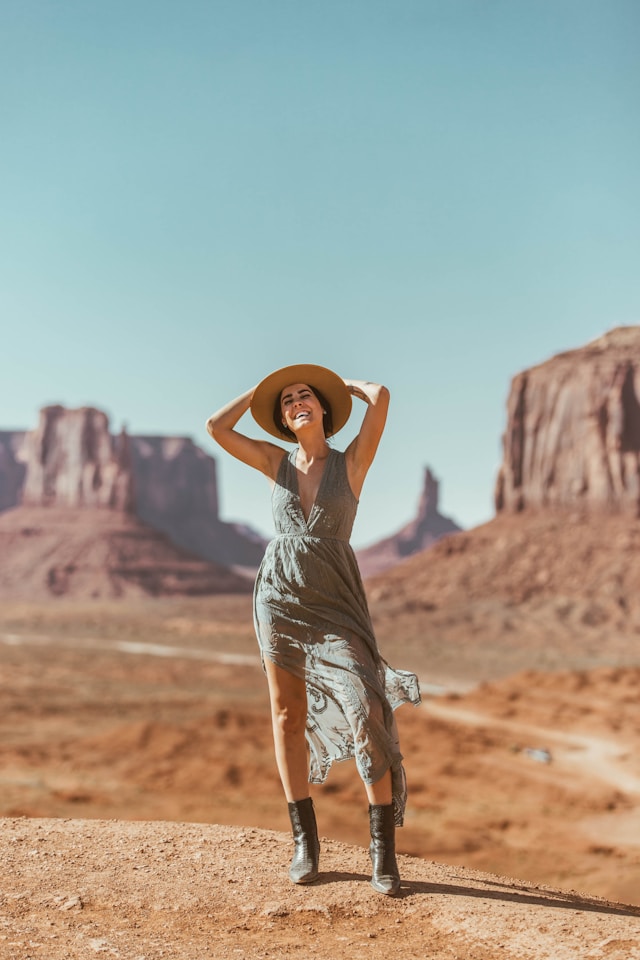The law of thirds is one of the most fundamental principles in photography. It guides composition to create visually compelling and balanced images. Whether you are an amateur with a smartphone camera or a professional using high-end gear, understanding and applying the law of thirds can significantly enhance the impact of your photographs.
At its core, the law of thirds divides an image into nine equal parts using two horizontal and two vertical lines. The points where these lines intersect serve as focal points, directing the viewer’s attention to specific elements within the frame. Photographers can create more dynamic and aesthetically pleasing compositions by placing subjects or key elements along these intersections or lines.
This compositional rule is not exclusive to photography; it has been used in painting, filmmaking, and design for centuries. Artists and creators have long understood that the human eye is naturally drawn to areas that follow this structural guideline, making it a universal tool for visual storytelling.
Why the Law of Thirds Matters
The placement of elements within an image can determine its overall balance and effectiveness. Centering a subject often results in static or uninteresting compositions, while off-center placement introduces movement, depth, and a sense of harmony. By aligning points of interest with the law of thirds grid, photographers achieve a natural and engaging composition.
Another reason the law of thirds is essential is that it helps prevent unintentional tension in an image. A subject placed randomly within the frame can make a photograph feel awkward or disjointed. With the law of thirds, compositions feel intentional, drawing viewers into the scene rather than making them uncertain about where to focus their attention.

Breaking Down the Grid
The grid used in the law of thirds consists of two equally spaced vertical lines and two equally spaced horizontal lines, forming nine sections. The four intersections of these lines are considered the most potent focal points within the frame. Placing the main subject at one of these intersections naturally leads the viewer’s eye to the subject without unnecessary distractions.
When a subject aligns with one of the vertical lines, it creates a sense of structure and balance. Similarly, positioning elements along horizontal lines—such as horizons in landscape photography—adds depth and avoids the common mistake of dividing an image into equal halves, which can make an image appear too symmetrical and lifeless.
Application in Different Photography Genres
The law of thirds is applicable across various photography styles, each benefiting uniquely from this composition technique.
Portrait Photography
In portraiture, placing the subject’s eyes at one of the upper intersections of the grid enhances engagement. The eyes naturally draw attention, and aligning them according to the law of thirds ensures the image feels proportionate and captivating. Positioning the subject slightly off-center also allows room for creative background elements, adding depth and storytelling to the shot.
Landscape Photography
The rule is particularly effective in positioning the horizon in landscapes. If the sky is dramatic with clouds, storms, or a sunset, placing the horizon on the lower third of the frame emphasizes the sky. Conversely, if the terrain is the focal point, positioning the horizon along the upper third highlights the land’s textures and details. Additionally, placing key features such as trees, mountains, or bodies of water along the vertical thirds creates a more balanced scene.
Street Photography
In street photography, the law of thirds guides the eye naturally through the scene, engagingly helping frame subjects whether capturing a person walking, architectural elements, or candid interactions; aligning elements with the grid creates dynamic and visually engaging compositions.

Wildlife Photography
For wildlife photography, positioning the subject’s eyes at one of the intersections enhances connection with the viewer. Placing the animal along a vertical third gives a sense of movement and environment, ensuring the composition does not feel confined or unnatural.
Still Life and Product Photography
Even in still life or product photography, the law of thirds helps create a balanced and commercial-looking image. Positioning slightly off-center products while keeping complementary elements within the remaining space enhances the image’s appeal and professionalism.
Using the Law of Thirds in Post-Processing
While composing with the law of thirds during a shoot is ideal, it can also be applied during post-processing. Most editing software, including Adobe Photoshop and Lightroom, features a crop tool that overlays a rule-of-thirds grid. This allows photographers to reframe their images, ensuring that key elements align with the optimal focal points.
Cropping an image to follow the law of thirds can salvage a shot that might initially appear imbalanced. By repositioning elements and adjusting framing, photographers can enhance visual flow and ensure the image effectively conveys its intended message.
When to Break the Law of Thirds
Although the law of thirds is a valuable guideline, knowing when to break it is equally important. Some compositions benefit from symmetry, central framing, or negative space, which can create powerful visual effects.
For instance, placing a subject dead center in portrait photography can create a sense of strength and dominance. Symmetry in architecture and reflections often looks best when perfectly centered. Minimalist compositions may require the subject to be positioned outside the rule of thirds to create an intentional sense of space.
Ultimately, the decision to follow or break the rule depends on the artistic vision, and the story conveyed through the image.
Practical Tips for Mastering the Law of Thirds
- Enable Grid Lines on Your Camera Most modern cameras and smartphones can display a rule of thirds grid. Activating this feature makes it easier to compose shots in real time.
- Practice with Different Subjects: Experiment with portraits, landscapes, and action shots to see how the rule affects composition in various contexts. The more you practice, the more intuitive it becomes.
- Analyze Professional Photography Study award-winning photographs to identify how professionals use the rule of thirds. Understanding their approach can provide valuable insights for improving your work.
- Use Post-Processing Tools Adjusting composition during editing can help refine an image, especially if it was not framed perfectly during the shoot.
- Trust Your Instincts While the law of thirds is a fantastic guideline, do not be afraid to trust your creative instincts. Some of the most memorable images come from breaking conventional rules.
Conclusion
The law of thirds is one of photography’s most straightforward yet powerful tools. By strategically positioning subjects and elements within the frame, photographers can create visually pleasing, engaging, and well-balanced compositions. However, like any rule in art, it is essential to understand when to follow and deviate from it to achieve unique and compelling imagery.
Whether used in portraiture, landscapes, or action shots, mastering the law of thirds enhances a photographer’s ability to tell stories through images. Continuous practice, observation, and experimentation will refine your skills, making composition an instinctive part of your creative process.


